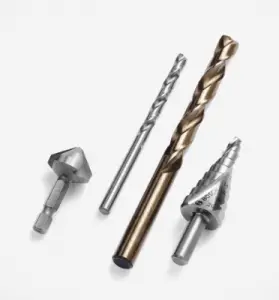
High-speed steels, abbreviated as HSS, are a specialized class of tool steels that were named primarily for their ability to machine and cut materials at high speeds (high hot hardness). It is often used in power-saw blades and drill bits. High-speed steel is superior to the older high-carbon steel tools in that it can withstand higher temperatures without losing its temper (hardness). High-speed steels are complex iron-base alloys of carbon, chromium, vanadium, molybdenum, or tungsten, or combinations there of. To achieve good cutting performance from HSS, an appropriate hardening response must be provided in heat treatment.
Central to the performance of high-speed steels is the hardening response achieved during the heat treatment process. Alloying elements are introduced in quantities given by the intended application and by their function in the heat treatment process, whether to increase the solidus temperature or inhibit the growth of secondary hardening precipitates, enabling higher operating temperature.
Hardness of High-speed Steel – AISI M2
Rockwell hardness of high-speed steel – AISI M2 depends on heat treatment process, but it is approximately 65 HRC.
Rockwell hardness test is one of the most common indentation hardness tests, that has been developed for hardness testing. In contrast to Brinell test, the Rockwell tester measures the depth of penetration of an indenter under a large load (major load) compared to the penetration made by a preload (minor load). The minor load establishes the zero position. The major load is applied, then removed while still maintaining the minor load. The difference between depth of penetration before and after application of the major load is used to calculate the Rockwell hardness number. That is, the penetration depth and hardness are inversely proportional. The chief advantage of Rockwell hardness is its ability to display hardness values directly. The result is a dimensionless number noted as HRA, HRB, HRC, etc., where the last letter is the respective Rockwell scale.
The Rockwell C test is performed with a Brale penetrator (120°diamond cone) and a major load of 150kg.
We hope, this article, Hardness of High-speed Steel, helps you. If so, give us a like in the sidebar. Main purpose of this website is to help the public to learn some interesting and important information about materials and their properties.
